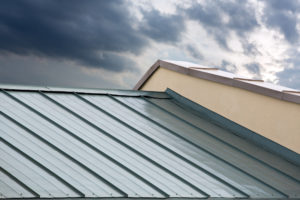Whether you love it or hate it, winter is not usually kind to your home. Low humidity, ice, and wind can all wreak havoc on your house. If you don’t take steps to prepare your home before the season hits, you can get stuck with costly repairs. Below, learn about the most common types of damage you might face and how to save money on your repairs.
Common Types of Winter Home Damage
Dropping temperatures can bring a whole host of problems into your home. As you might have guessed, one of the most common issues of below-freezing temps is burst pipes. Exterior pipes, such as those you use for the garden hose, can burst if you don’t take steps to clear the lines. However, interior pipes can freeze, too.
Cold winter air is also less humid, which can cause materials in your home to retract and dry out. This can spell trouble for plaster walls and caulking. Hairline cracks can form at various places on your walls due to the lack of humidity or poor climate control. It might look serious, but BobVila explains that cracks like these are usually cosmetic, not signs of structural damage.
Given that your home’s exterior bears the brunt of winter weather, it makes sense that a lot of damage can occur outside. For example, your roof may be prone to ice dams, which form when heat escapes the house and melts snow on the roof. When ice accumulates along the edge of a roof, it traps water that can flow into your house. Roofs are also susceptible to damage from wind, hail, and falling branches, which may happen during winter storms.
Repairing Winter Home Damage
Luckily, some winter damage can be repaired with a simple and affordable DIY job. For example, you can re-caulk your windows and other problem areas to fix cracks and peeling in old caulk. It’s also easy to repair hairline cracks in plaster and repaint your walls yourself to save money.
Repairing issues like roof damage can be expensive but should always be handled by a professional because of the danger involved. It costs an average of around $7,900 to replace a damaged roof. However, patch jobs will sometimes suffice. Roof repairs typically cost about $550, making this a much more affordable option. In any case, about 40 percent of your bill will be for materials, while the remaining 60 percent goes toward labor.
If your pipes burst or start leaking due to ice, you can mitigate the damage by turning off the water and trying to contain the mess. It’s important to have a plumber come out to make repairs as soon as possible (expect to pay $70 – $130 for a master plumber).
How to Winter-Proof Your Home for Next Season
You’ve probably heard the saying that an ounce of prevention is worth a pound of cure. That adage certainly applies to home repairs. Kiplinger suggests winter-proofing your home before the season starts by clearing the gutters, giving your HVAC system a once-over, and taking other steps.
Having proper insulation and using things such as heat tape can help prevent frozen pipes. You’ll also want to watch your thermostat setting to make sure it’s not too cold in your home. This will help with pipes, as well as your plaster and caulk. Keeping interior doors open on cold days can help ensure that there aren’t any cold spots in your home.
Keep in mind that you can’t always prevent winter damage, especially from storms. However, you can ensure that your homeowner’s insurance is comprehensive enough to pay for damage that falls outside your control.
Winter home damage can create a major headache. Some things will not be in your control, but getting your home prepped and knowing how to prevent damage will ensure you’re in the best shape possible for winter.






